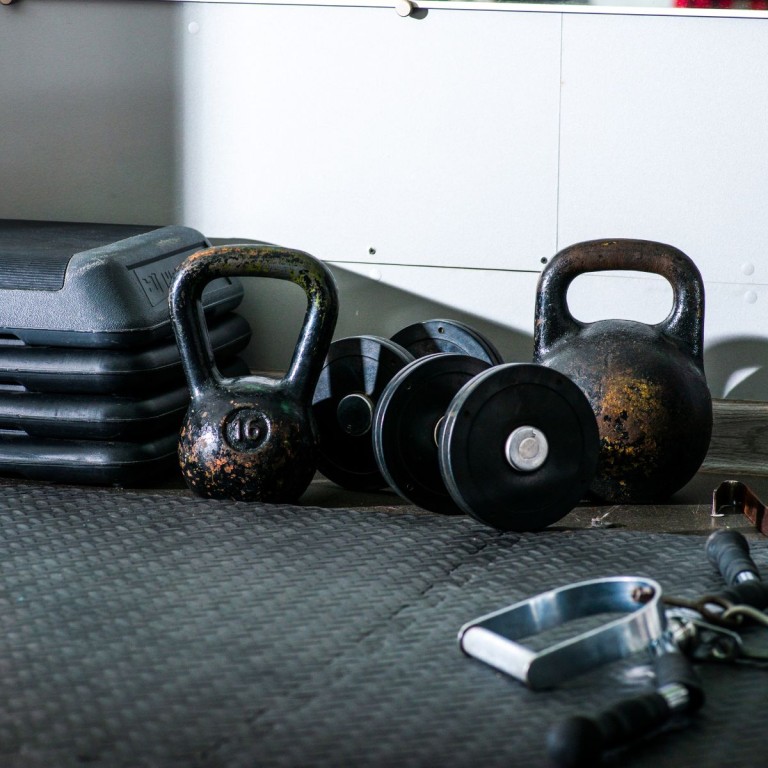Buying Food During a Crisis
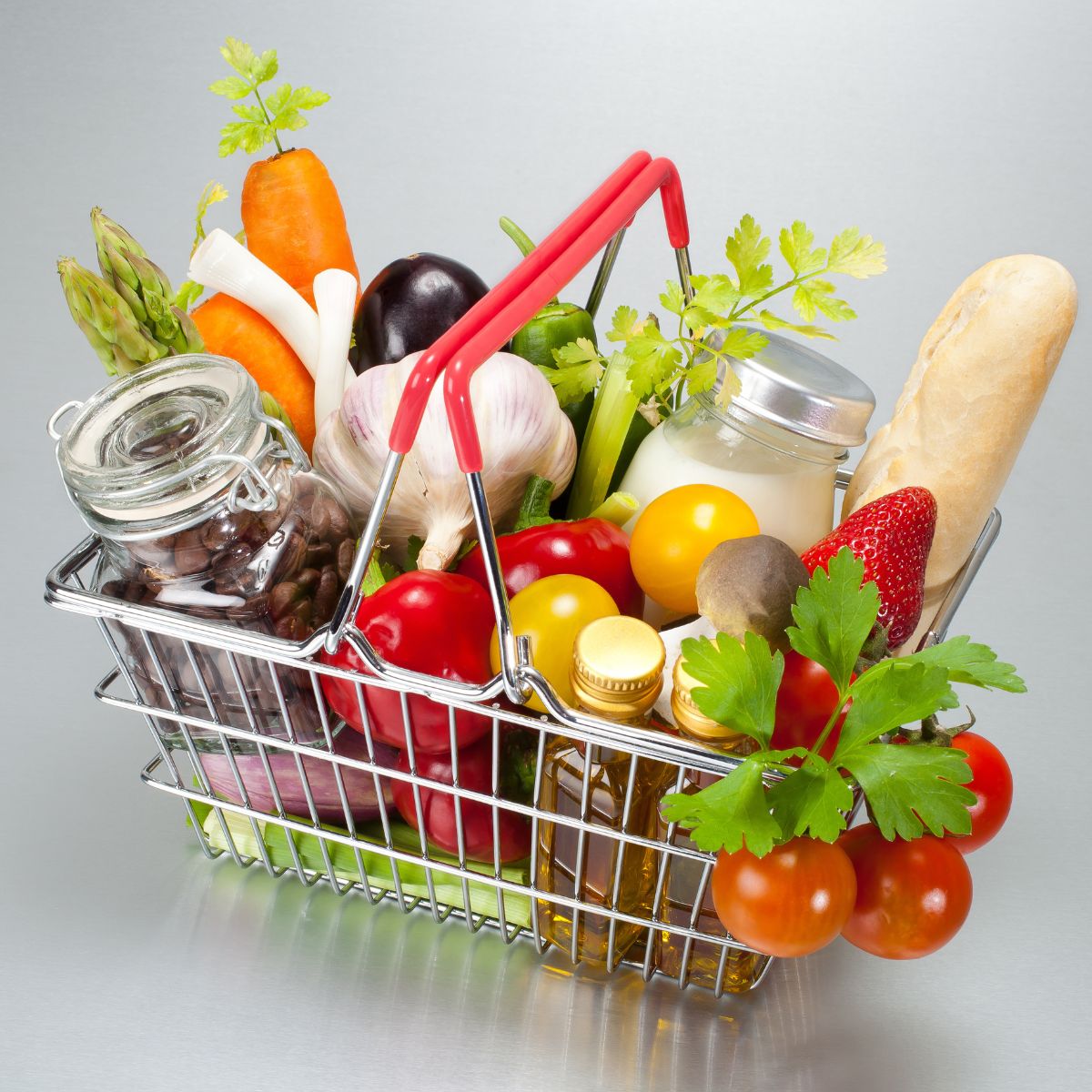
Meal Planning to Stay Healthy and to Keep Costs and Stress as Low as Possible.
One thing that many of us are learning firsthand these days is that buying food during a crisis can be more than a little complicated. Grocery shopping for healthy food on a budget is what I do, but if you’re like me and don’t usually keep a lot of extra food in the house, it’s clear that a different approach is needed.
To help with that, I went to a couple of experts and called on tactics that I’ve used in the past but had let go of along the way. Between us all, some pretty sound strategies emerged for buying food during a crisis that I have now implemented. I wanted to share them with you because they’ve already started making a difference for my family in keeping us as healthy as possible while lowering costs and stress.
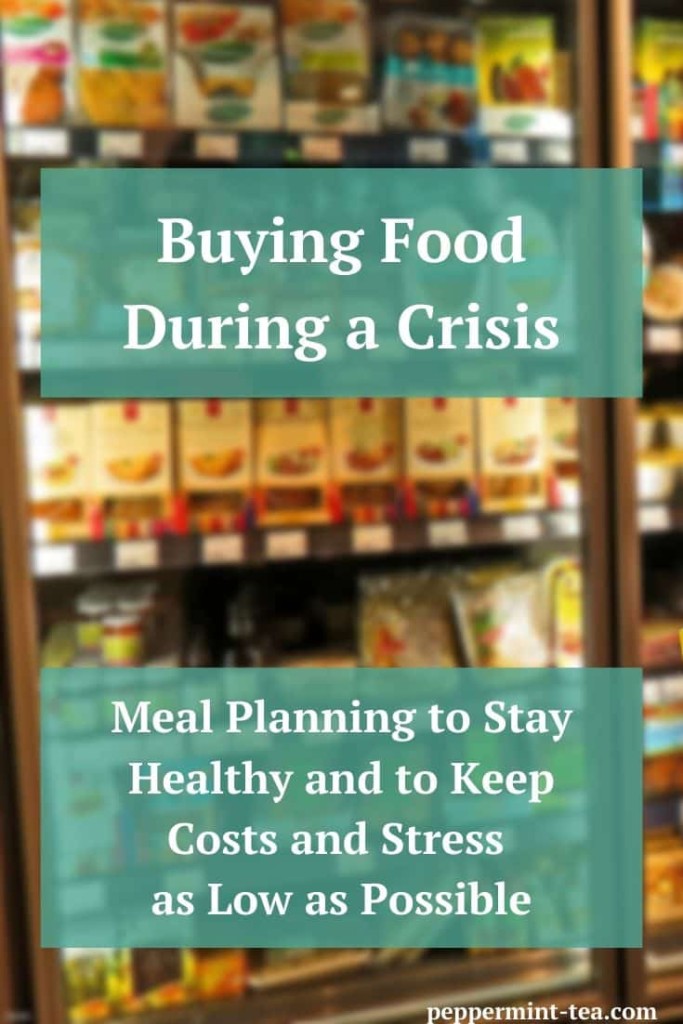
Please Note: I earn from qualifying purchases made through some of the links included in this post. You can read my disclosure policy here.
Take an Inventory of What You Have
At this point, your pantry and freezer may be fairly full of certain types of food, but do you really know what you have? If your answer is anything less than a resounding “yes!” you need to take inventory. It’s one of the crucial first steps to buying food during a crisis.
Inventory Process
My husband and I did this recently, and it was eye-opening to say the least. We went through the pantry, the fridge, the freezer, the cleaning products and regularly-used household items (such as light bulbs). Literally everything in those categories was listed. How many of each item and whether we would need more to get us through the next month. This was definitely a helpful exercise because we found things that we forgot we had, and I realized that we had less of some things than I thought.
If you don’t have a spouse or partner to help, enlist an older child or send your starter list to a neighbor or friend. They can be on speaker phone calling things out to you. The whole process could take take several hours, but I guarantee it will be well worth it. See below in the resources section to access the free Food Inventory and Shopping List Template that we came up with.

Plan 30 Basic Dinners for the Next Month

This idea came from Elise New over at The Frugal Farm Wife. Because Elise lives on a farm, going to the grocery store many times a week isn’t convenient for her family. She’s such a great resource because her family already implements many strategies that would help during a crisis. She says that she likes to have a big list on hand of 30 potential dinners for the month. That way, she can stock those ingredients, draw from that list for her weekly meal plan, and it doesn’t take a lot of time or brain power.
Since you may have random ingredients around that you found during your inventory, this is also a chance to think about how you can incorporate what you already have into meals for the next month. Let’s face it, in preparing for our current situation, most of us have already spent much more than we usually do on groceries. Now, it’s time to pull it all together so that we can actually use what we have and not have to spend as much for a while. Since we’re now thinking in terms of meal planning for a month or at least two to three weeks instead of a week at a time, it’s okay to start using what we have on hand.
Registered Dietician Kim Barrier says that for some of her dinner options, she’s trying to double the recipes or choose dishes that make many servings so that there are leftovers to reheat for lunches. That’s important when planning out food for the next month – remember to include breakfasts, lunches and snacks as well as dinners.

Do One Larger Shopping Trip for the Month
This will include stocking up as much as possible on the food you’ll need for your meals, as well as any household or cleaning items that you’ll need for the month. When buying food during a crisis, it’s fine to buy fresh fruits and vegetables, but you’re just not going to be able to rely on them as much as you may normally. Buying more storable foods is going to be the way to go. That includes beans, nut butters or sunflower seed butter, brown rice, whole wheat and bean pastas, oats, nuts and seeds.
Keep Canned and Frozen Vegetables and Meat on Hand

Kim Barrier and Elise New both suggest keeping a good supply of canned tomatoes and frozen vegetables on hand as well. Kim reminds us that frozen and canned vegetables are just as nutritious if not more so in some situations than fresh. Fresh fruits and vegetables start losing some of their nutrients once picked, so the longer they’re in transport to the grocery and/or sit in the produce section the more they lose. Kim says that “frozen fruits and vegetables, on the other hand, are picked at peak season and immediately processed, which locks in the nutrients.”
Canned vegetables are also picked at peak season and canned. “If you were to compare the amount of nutrients you would get from fresh, frozen or canned foods you would find the difference is only a matter of a few percentage points for most nutrients.” In fact, Kim adds, “Some things even increase with canning. For example, lycopene, the phytonutrient found in tomatoes that might help prevent some cancers, is only released when the tomatoes are cooked.”
Elise urges everyone not to forget about freezing meat or buying meat that’s already frozen, which is often cheaper than buying fresh. While you don’t want to hoard more than your family is going to eat in a month, buying meat and freezing it lets you take advantage of sales that are still going on. Elise says that holds true for other items on a whole foods diet as well. Vegetables like potatoes, sweet potatoes, winter squash, garlic and onions store well for a while and make a good base for a number of soups, stews, casseroles and other dishes. So, if you find these items and they’re on sale, stock up.
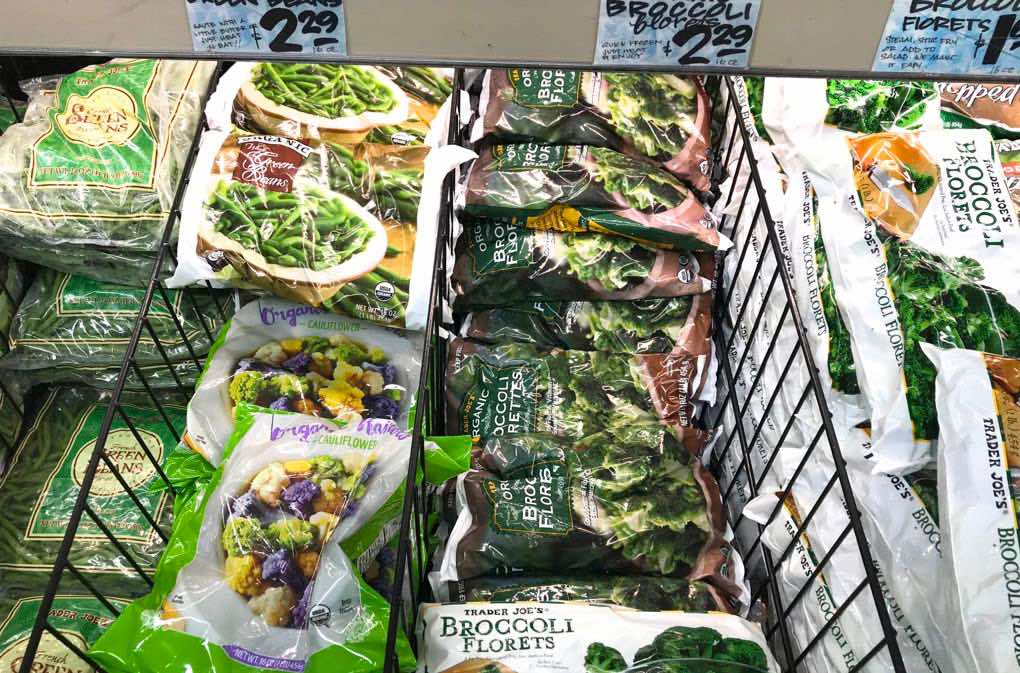
Do Smaller Shopping Trips Once Every 1-2 Weeks When Buying Food During a Crisis
The main goal with buying food during a crisis (or any time for that matter) is to reduce your shopping trips to once every 1-2 weeks. This will reduce the stress of feeling like you should constantly be looking for food, and it will ease the strain on your pocketbook since every time you go in the store, you’ll usually pick up more than what you went in for. Since you will have done the bulk of your shopping in your larger trip, this trip is just to get any milk or fresh foods that you can’t do without.
Money-Saving Tip
To save money, Elise suggests keeping an eye out for produce that has been taken out of the regular displays and marked down because it’s about to go bad. If you also notice employees removing produce from the displays, ask them what they’re going to do with it or if you can just have it. Many stores are happy to deeply discount or giveaway food that they were going to have to throw out anyway. You won’t know unless you ask.
During regular times, Elise recommends getting to know your stores and when they tend to have sales and mark down produce and meat on a regular basis. While many of the stores still honor their sales during a crisis, stocking routines and procedures are probably different than they usually are so this may be difficult to do until things get back to normal.
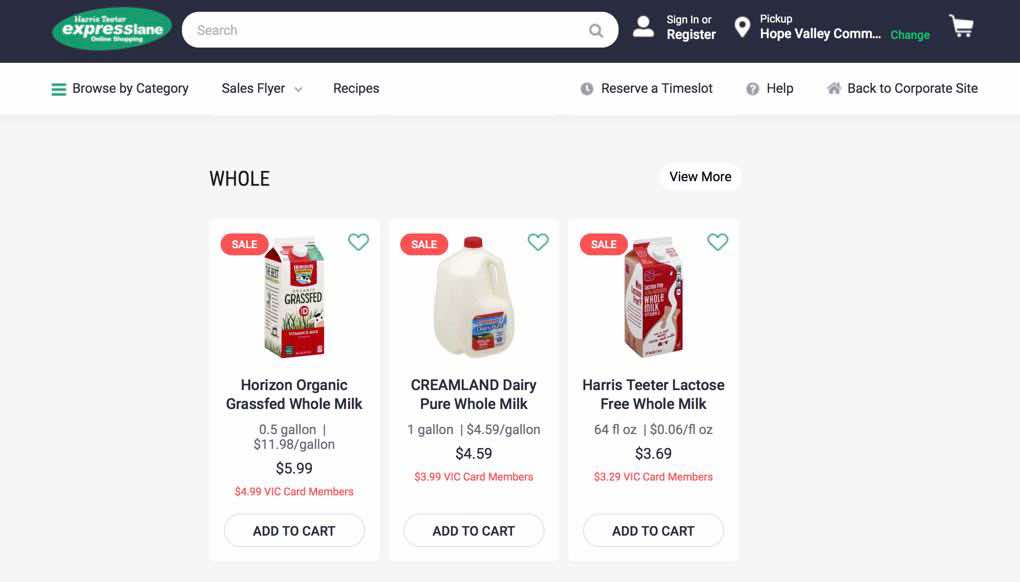
Online Shopping and Curbside Delivery
Elise is a strong believer in online shopping and curbside delivery with your grocery store because it limits everyone’s exposure to germs. I highly recommend that before you sign up and pay the initial fee for one of these services, be sure to call the store and find out if pickups will be able to start immediately or if there’s a delay because of the current situation. If there is, you may still want to try it anyway, but it’s important to know what you can and cannot count on before you sign up.

More of Elise’s Tips for Buying Food During a Crisis
- Learn how to use what’s left in the produce section or on the shelves. This will help you to stick with your one large and limited smaller shopping trips a month. If you’re looking for canned beans and you can only find dry, learn how to cook dry beans.
- Look outside the grocery store. Take eggs for example – if egg prices at the store are getting high, check with your local farmers. Chances are that if you buy eggs from pasture-raised chickens, you’ll probably get the eggs from the farmer cheaper than you will from the store.
- Keep looking at weekly sales flyers because many stores still honor them for the items that they have in stock.
- Use your planned meals as a guide but be flexible in the way that you fix them if an ingredient isn’t available or if something comparable is on sale. If a recipe calls for zucchini, can yellow squash be substituted instead?
- Make your own condiments. It’s almost always cheaper to buy the ingredients to make healthier versions of condiments than it is to buy them.
** My note based on my experience and discussion with Elise – Make desserts and “treat” foods from scratch as much as possible. Doing this limits the amount in the house at any one time, and it’s also a lot less expensive!
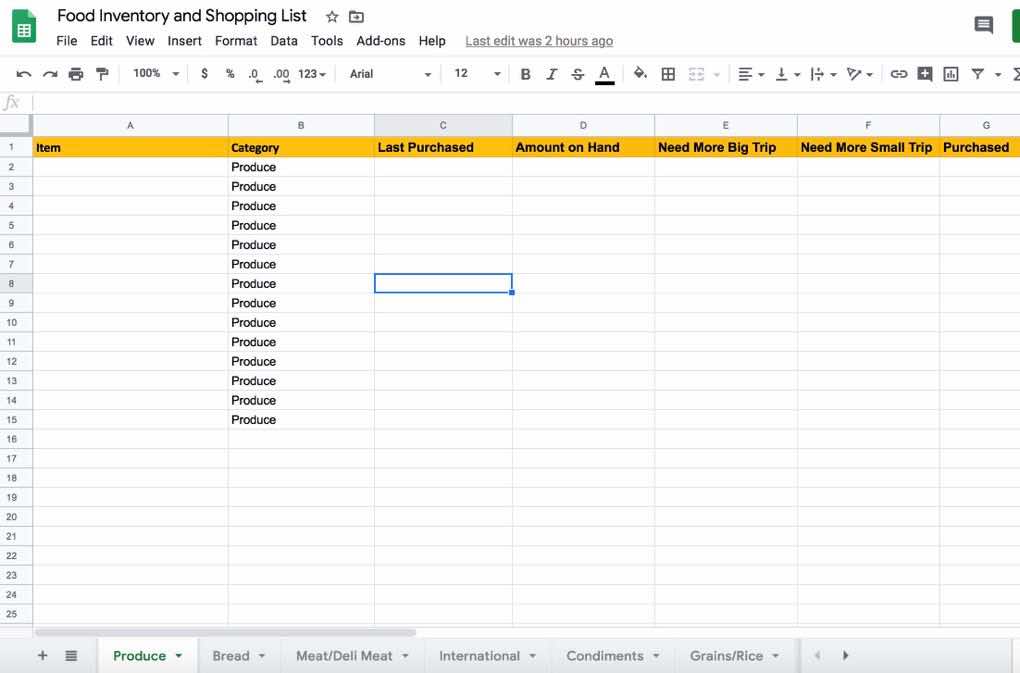
Resources
- Elise’s Grocery Budget Mastery (affiliate link) is a fantastic resource that walks you through the six essential steps to slashing your grocery budget. It’s served as a valuable reminder of some of the strategies I used to use but let go along the way. I’m definitely using it to tweak some of the less than ideal habits we’ve gotten into.
- Feel free to access my free Food Inventory and Shopping List template here or through the box at the side of your screen. My husband made the first version of this as a standard spreadsheet years ago, but I’ve found that it’s more useful as a Google sheet so that it’s a live document that I can easily access while I’m shopping.
- The U.S. Department of Agriculture’s Choose My Plate program’s resource for food planning during the coronavirus pandemic.
Lean on Your Community
If you try any or all of these steps, feel free to let us know how it’s working for you in the comments below. Also, if you have other strategies that you’re trying, let us know that as well. Whether we’re veteran frugal meal planners or fly-by-the-seat-of-our-pants food buyers, we all have something to learn from each other.


